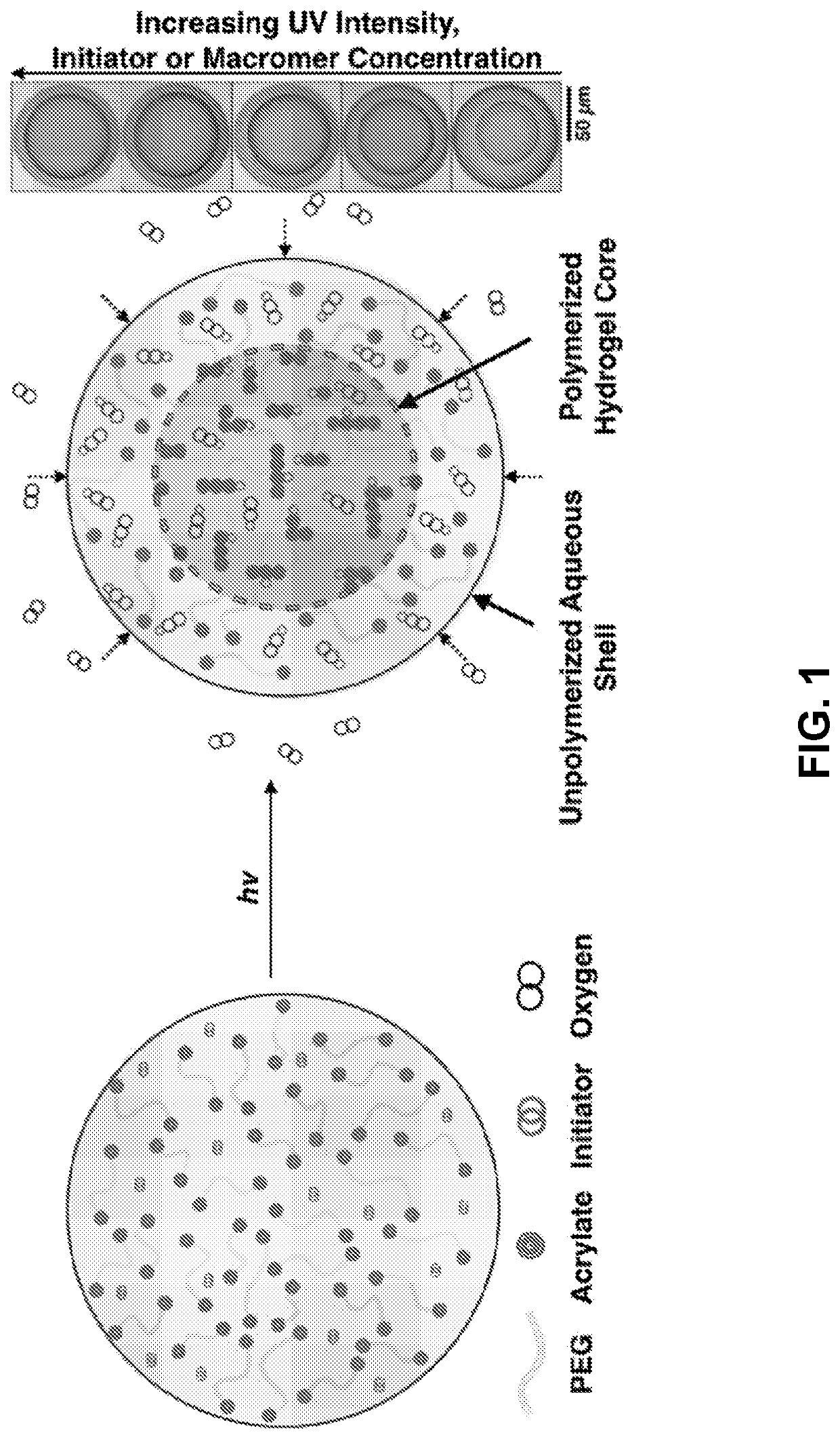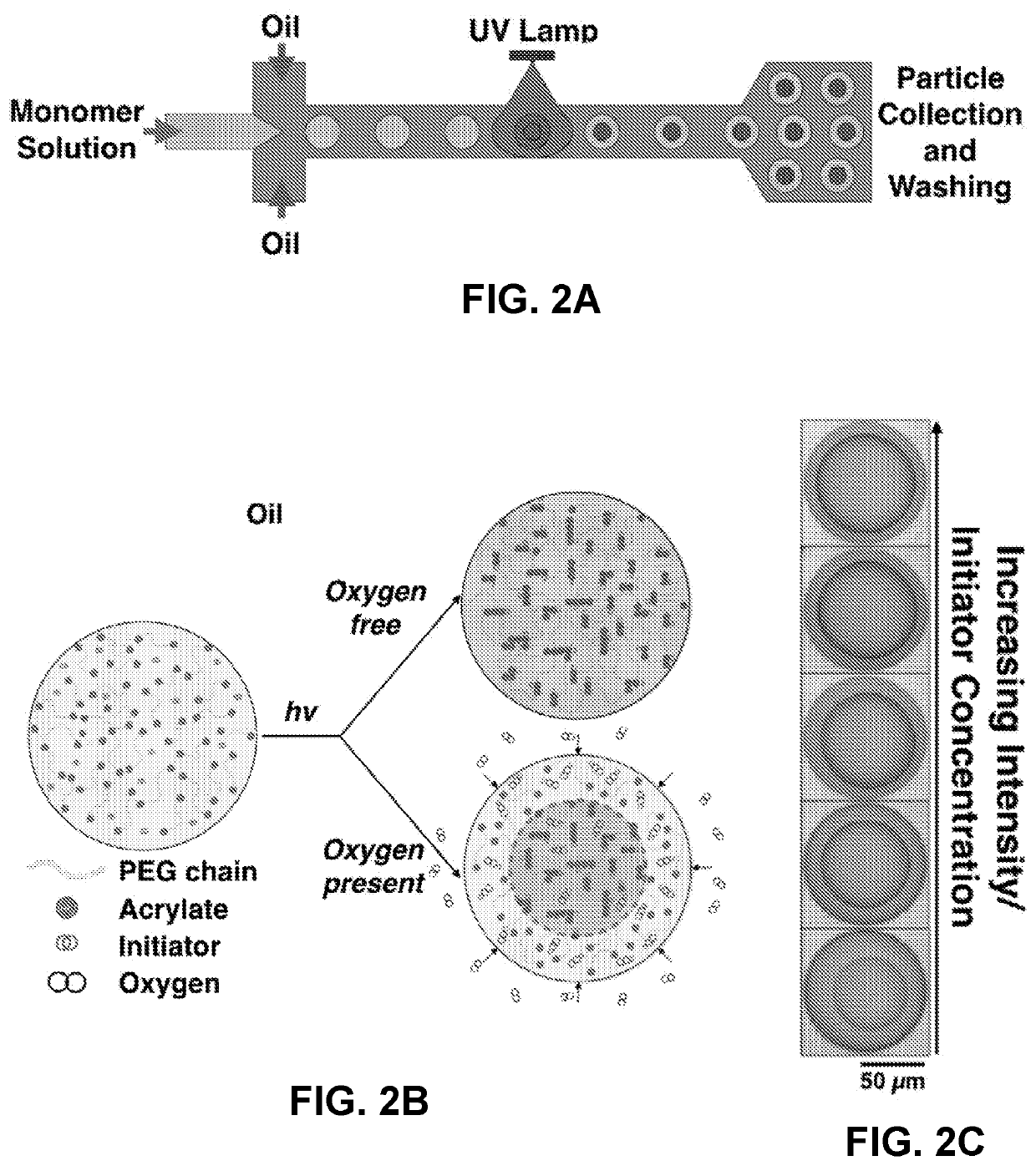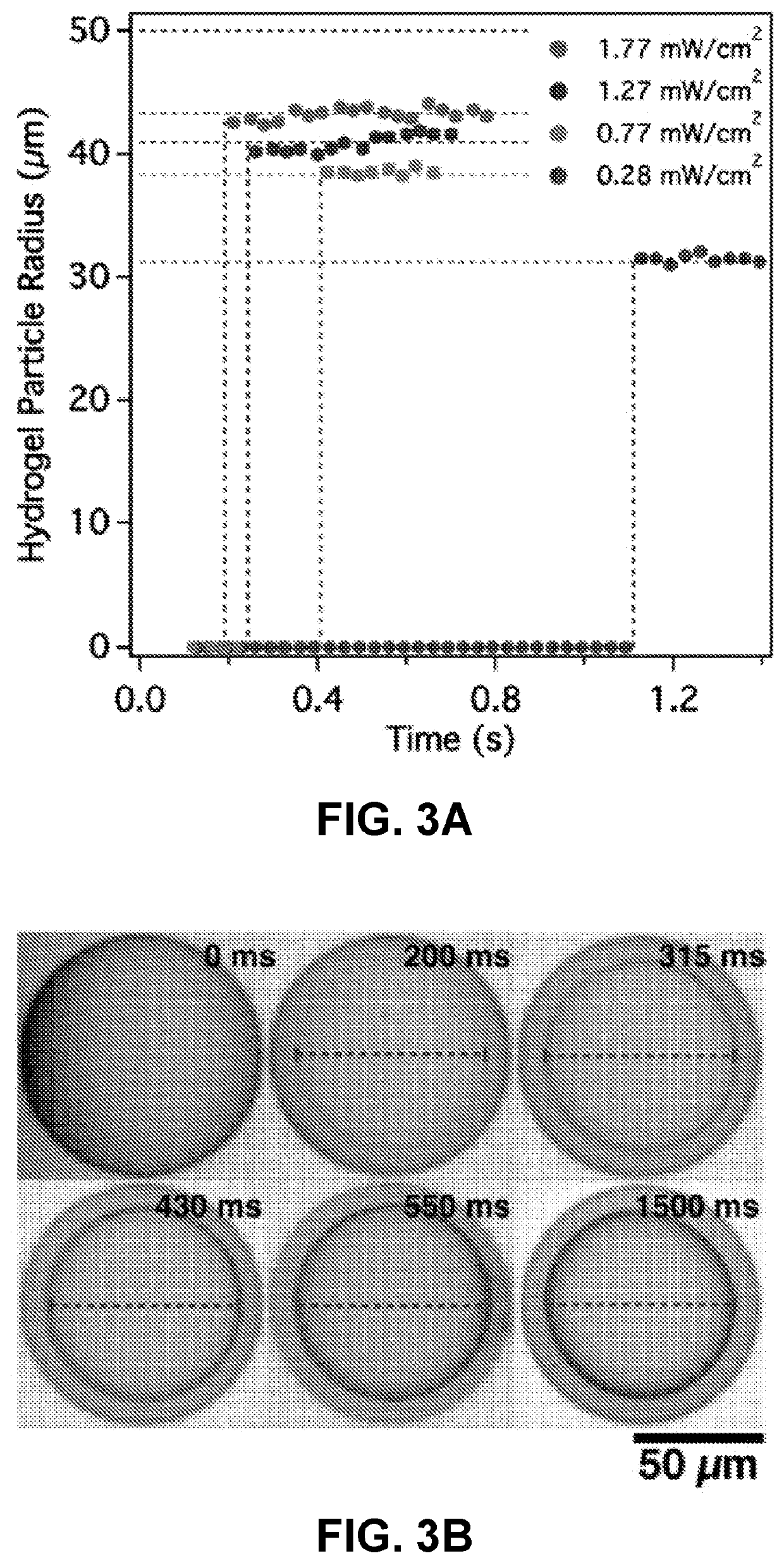Exploiting oxygen inhibited photopolymerization within emulsion droplets for the fabrication of microparticles with customizable properties
- Summary
- Abstract
- Description
- Claims
- Application Information
AI Technical Summary
Benefits of technology
Problems solved by technology
Method used
Image
Examples
example 1
Precise Control of PEGDA Hydrogel Particle Size by Oxygen Inhibited Photopolymerization within Microfluidic Droplets
Abstract
[0076]Hydrogels based on poly(ethylene glycol) (PEGDA) have been engineered for a variety of biomedical applications including drug delivery, cell delivery, and tissue engineering. The miniaturization of these materials to nanoscale and microscale particles has been a subject of intense activity, and promises to extend their range of applicability. In general, however, these efforts have been frustrated by the inhibition of chain growth polymerization by oxygen, an effect that is exacerbated as target length scales are reduced. Here, we report a method that exploits the undesirable oxygen-inhibited photopolymerization to produce size-controlled PEGDA hydrogel particles. The role of initial solution composition on resultant particle size is reported, and is found to contribute through its influence on the polymerization rate, as well as the diffusivity of oxygen...
example 2
Fabrication of Non-Spherical Hydrogel Particles for Drug Delivery Abstract
[0198]Hydrogel microparticles have become an intensively studied platform for the delivery of drugs to treat many diseases, since they can be easily modified to enhance treatment efficacy. Conventional particle fabrication methods usually generate spherical particles, but there is an interest in producing non-spherical particles because particle shape has been shown to affect drug release profiles, particle degradation, transport in the body, and targeting abilities. There is a limited availability of techniques that produce non-spherical particles, amongst which microfluidics stands out because it allows precise dose control of each substance and facile functionalization of particle surfaces. However, current microfluidic methods are restricted by device geometry and capillary pressure, making it almost impossible to produce particles small enough (<10 μm) to be used for drug delivery applications. Using poly...
example 3
Engineering Functional Hydrogel Microparticle Interfaces by Controlled Oxygen-Inhibited Photopolymerization
Abstract
[0213]Functional poly(ethylene glycol) diacrylate (PEGDA) hydrogel microparticles for the detection of bioactive macromolecules were fabricated via oxygen-inhibited photopolymerization in a droplet microfluidic device. Hydrogel network functionalization and architecture were characterized using a biotin-avidin binding assay, which revealed radial network inhomogeneities dependent on exposure conditions. Empirical results were corroborated using a reaction-diffusion model, describing the effects of exposure intensity on the spatial photopolymerization kinetics and resulting polymeric mesh network. The combination of finely controlled exposure conditions and predictive simulations enables the generation of tailored particles with microengineered interfaces and gradients in crosslinking density, which dictate solute diffusivity and elasticity, augmenting the utility of thi...
PUM
| Property | Measurement | Unit |
|---|---|---|
| Length | aaaaa | aaaaa |
| Fraction | aaaaa | aaaaa |
| Fraction | aaaaa | aaaaa |
Abstract
Description
Claims
Application Information
 Login to View More
Login to View More - R&D
- Intellectual Property
- Life Sciences
- Materials
- Tech Scout
- Unparalleled Data Quality
- Higher Quality Content
- 60% Fewer Hallucinations
Browse by: Latest US Patents, China's latest patents, Technical Efficacy Thesaurus, Application Domain, Technology Topic, Popular Technical Reports.
© 2025 PatSnap. All rights reserved.Legal|Privacy policy|Modern Slavery Act Transparency Statement|Sitemap|About US| Contact US: help@patsnap.com



